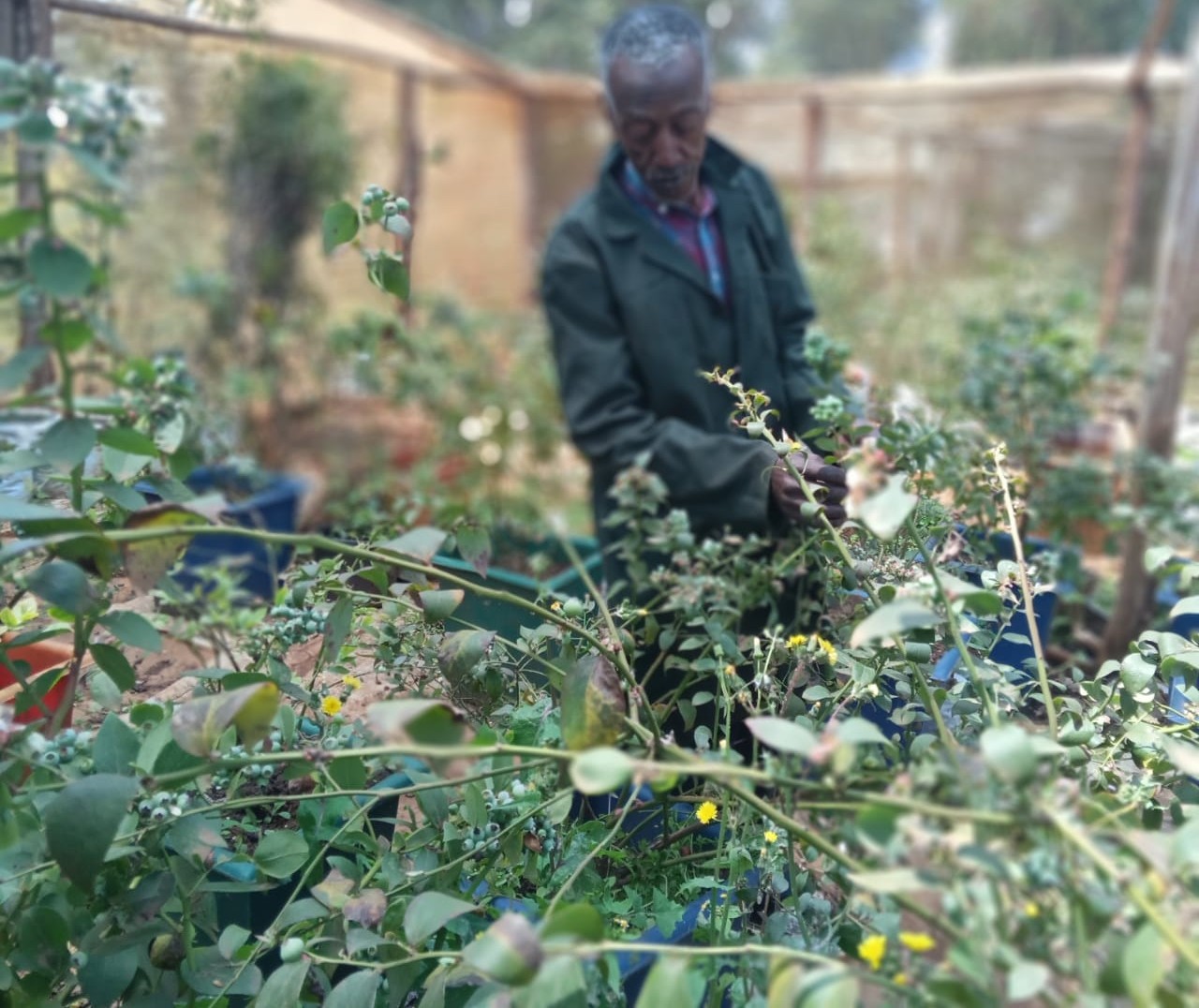
By George Munene
Though Anthony Kamiti’s decision to grow blueberries--a superfruit rarely cultivated in Kenya-- might seem confounding, his answer to anyone who asks is simple: “There are few crops you can grow in Kenya that will earn you Sh2,000 a kilogram.”
In 2019, the farmer based in Limuru, Kiambu County, was gifted five blueberry seedlings by a friend who had tried to grow the crop in Kenya for close to twenty years to no avail.
Three years on, he is organically growing 45 pieces of the berry on a 25 feet by 30 feet piece of land.
He credits his success to cultivating the crop in containers. This way he can easily regulate their pH levels, moisture, and compost content.
He currently sells the superfruit in ¼ kilogram batches of Sh500 to regular buyers. This, he points out, is a below market price as the fruit retails locally for Sh2600 a kilogram.
For a three to four-month harvesting season, he can get over 30 kilograms from his crop.
Related News: The Kenyan farmers pioneering dragon fruit farming—the Sh1000/kg fruit
“Currently, the existing local market demand is insatiable. The fruits sold in local supermarkets are delivered by a handful of major suppliers, but the bulk of them are imported from South Africa. With the few plants I have, I can barely keep up with orders from individual buyers,” he said.
Classed as a superfruit-- fruits that are very good for your health. Blueberries contain significant amounts of antioxidants, vitamin C, disease-fighting phytoflavinoids, and dietary fiber.
Some of Kamiti’s customers are prescribed blueberries by their dieticians.
Despite its lucrative returns, owing to its novelty and the difficulty of its propagation, each seedling costs a tidy Sh2,000. This means its cultivation remains out of reach for many farmers.
In his experience, diseases or pests affecting the crop are limited with only the cold weather majorly impacting their production.
Growing the berry is also not labour intensive as they are low-maintenance plants compared to most other crops.
With regular scouting, he is able to arrest pathogens by spraying a concoction of chili and garlic.
“They’ll however need protection from birds which consume even the unripe fruit,” he added.
Through his journey with blueberries, the biggest hurdles Anthony has encountered are regulating soil pH, propagation, and watering.
“It is easier for me to carry out soil amendments such as altering pH levels and watering when the crop is potted,” Anthony explained.
The crop should be well watered ensuring the soil is always moist.
Related News: Blueberry demand results in unique technology support
Related News: Kakuzi banks on macadamia & blueberries as avocado business falters
He also advises against growing with farmyard manure as it can increase the alkalinity of the soil. Blueberries are famously acid-loving crops.
The berry's cuttings root in three to four months and take at least two years to fruit. Seeds take longer time to germinate
At its peak production, after more than eight years, they can give up to 10 kilograms of berries annually.
They are a long-term crop with a lifespan of up to 20 years and can be harvested three to four years after planting.
Anthony Kamiti: 0735 478880
















Comments powered by CComment